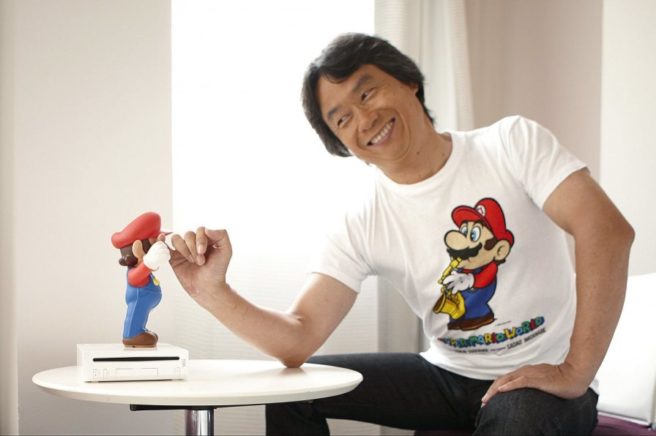Miyamoto on Mario – letting other devs work with the IP, New Donk City worries, not interested in remakes, more
IGN has a lengthy new piece with Shigeru Miyamoto all about Mario. Miyamoto talked about letting other developers handle the IP, his initial worries with how players would react to New Donk City in Super Mario Odyssey, and not wanting to remake older games.
We’ve picked out some notable quotes below. The full article with more comments from IGN is located here.
On letting younger developers work with Mario…
“There’s only a certain amount of things that you can create on your own. It’s important to get young minds in, too. I think it becomes more fun if young minds are involved.”
On the fine line with Mario…
“When it’s internal teams, they really understand it, although they try to push that line a little bit further. But when it’s an external partner, I make sure that line is very clear. I have times where I’m actually strangely open and it’s the team that’s worrying too much. But then other times, I’m really strict in certain other points.”
On New Donk City in Super Mario Odyssey…
“I was worried about how players would react to being in a world where Mario is this tall and normal people are a little bit taller. Or the fact that people don’t get mad at Mario when he’s jumping up and down all over the place. But with all that said, I think I realized that the character Pauline has already existed, and the idea of this game taking place in the city worked out really well. And so we ran with it.”
On not being pressured to come up with new characters, but new mechanics instead…
“Fundamentally, I think that it’s ideal if we can get old characters to do new things. When there is a new game mechanic introduced and there’s a new character that really, really fits well, I think it’s great. But I do have a little bit of hesitancy and resistance when someone’s trying to overbearingly bring their thoughts in, and trying to create new characters over and over again.”
“As a child I wanted to be a manga artist, and as a manga artist usually you have this symbolic character that’s yours. And you try to use that character in many different stories and episodes that you create, almost like how Hitchcock is in every one of his movies. For me, Mario is that, and I want to create as many different games as possible using Mario. And I still think there’s a lot of potential and possibility left.”
On not wanting to remake older games…
“I don’t really feel like I want to remake any of them. It’s more natural to always create new mechanics and new games.”
On how Miyamoto comes up with new game ideas…
“I really start with the game mechanic, and then trying to make sure that the character that gets put into the game fits that mechanic. If you divide things into large categories, you could go the Mario route or the Zelda route. And then, for example, with a game like Luigi’s Mansion, I really thought that Luigi was the perfect fit for that game, and that’s how it manifested. And for characters like Pikmin, for the mechanic that current Pikmin games have, they were perfect.”
“In a sense, I really feel like I own this talent agency and I am casting all these great talent into these games.”
“In Mario, it really is what you can see and what you can touch and trying to build creativity there, whereas Zelda is about exploration and really going out [into the distance]. So there is that difference in density.”
On the Tox Box enemy in Mario…
“When the hole is on your side, Mario can just get into the cube and you’re safe, but if he doesn’t, you get squashed. And it’s easy to see. It’s very clear and understandable. It’s also easy to predict. But once you actually start thinking about it, then it becomes complicated. Once you start trying to put that into action, it becomes complicated. I feel like that is probably one of my masterpieces.”
On the importance of physical input…
“I wouldn’t want to see the world go in the direction where all you need to do is think to make things move, or all you need to do is control things with eye movement.”
“I really think that movement is fun, and in that sense there’s a lot more evolution that something like movement can have within a game. For example, even with the gyro sensor that we have now, you need to calibrate it to have it work. Maybe in the future, it will somehow read the magnetic poles or axis of the Earth so you don’t need to calibrate it, or will use almost no electricity whatsoever. It would be great to see things happen in that aspect.”
On how creativity is essential for the future of Mario…
“Simply put, in Mario, you run, you jump, you fall, you bump into things. Things that people do all the time in everyday life, and that’s just inserted into the game. Going on to future generations and iterations of Mario, I think obviously, the developer who makes these games has to be creative, but I also think the players must be creative as well. They need to think and act themselves.”
“I think what makes Mario really relatable for a lot of people is the fact that it requires creativity on the side of the player to be able to think and act and learn from those actions. When you look at games like Super Mario Odyssey or even Super Mario 64, that’s what they’ve been doing. That’s the key to what has made Mario so accepted and popular.”
